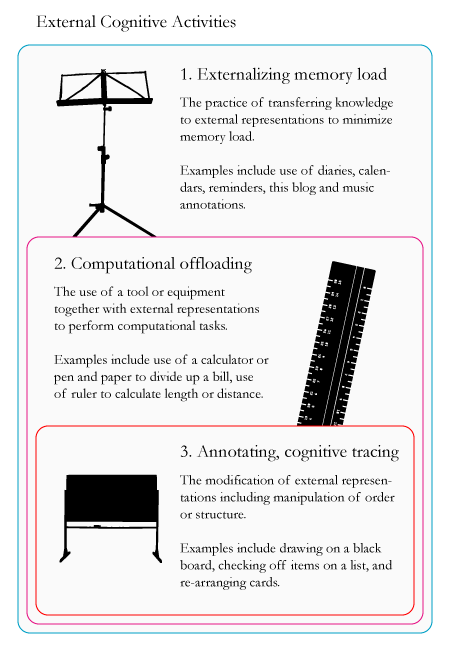 These three types of activities are heavily inter-dependent. In the diagram above they are listed from broadest to most specific. The externalization of memory load is the most basic external cognitive activity. It is involved in all types of external cognitive activities.
These three types of activities are heavily inter-dependent. In the diagram above they are listed from broadest to most specific. The externalization of memory load is the most basic external cognitive activity. It is involved in all types of external cognitive activities.Computational offloading leverages memory externalization for the specific purpose of performing computational tasks. It is the next most basic external cognitive activity.
Annotation and cognitive tracing can be used to support both types of distributed cognitive activities mentioned above. This type of distributed cognition involves the manipulation or modification of memory and computational externalizations that impact the meaning of the externalizations themselves.
External cognitive activities are used to support experiential and reflective modes of cognition [more info on cognitive modes]. These activities rely on and support all types cognitive processes defined in my earlier post – attention, perception, memory, language, learning, and higher reasoning [more info on cognitive process types].
This framework of external cognitive activities complements the Information Processing model by identifying how people leverage their external environment to enhance and support their cognitive capabilities [more info on information processing model].
It also complements the model of interaction by providing additional insights regarding how people interact with the world (or system images) to support and enhance their cognitive capabilities. However, it does not provide insight into how people interact with systems for non-cognitive pursuits, such as physical and communication ones [more info on model of interaction].
[source: Interaction Design: Beyond Human-Computer Interaction]
** What the hell is ID FMP? **
No comments:
Post a Comment